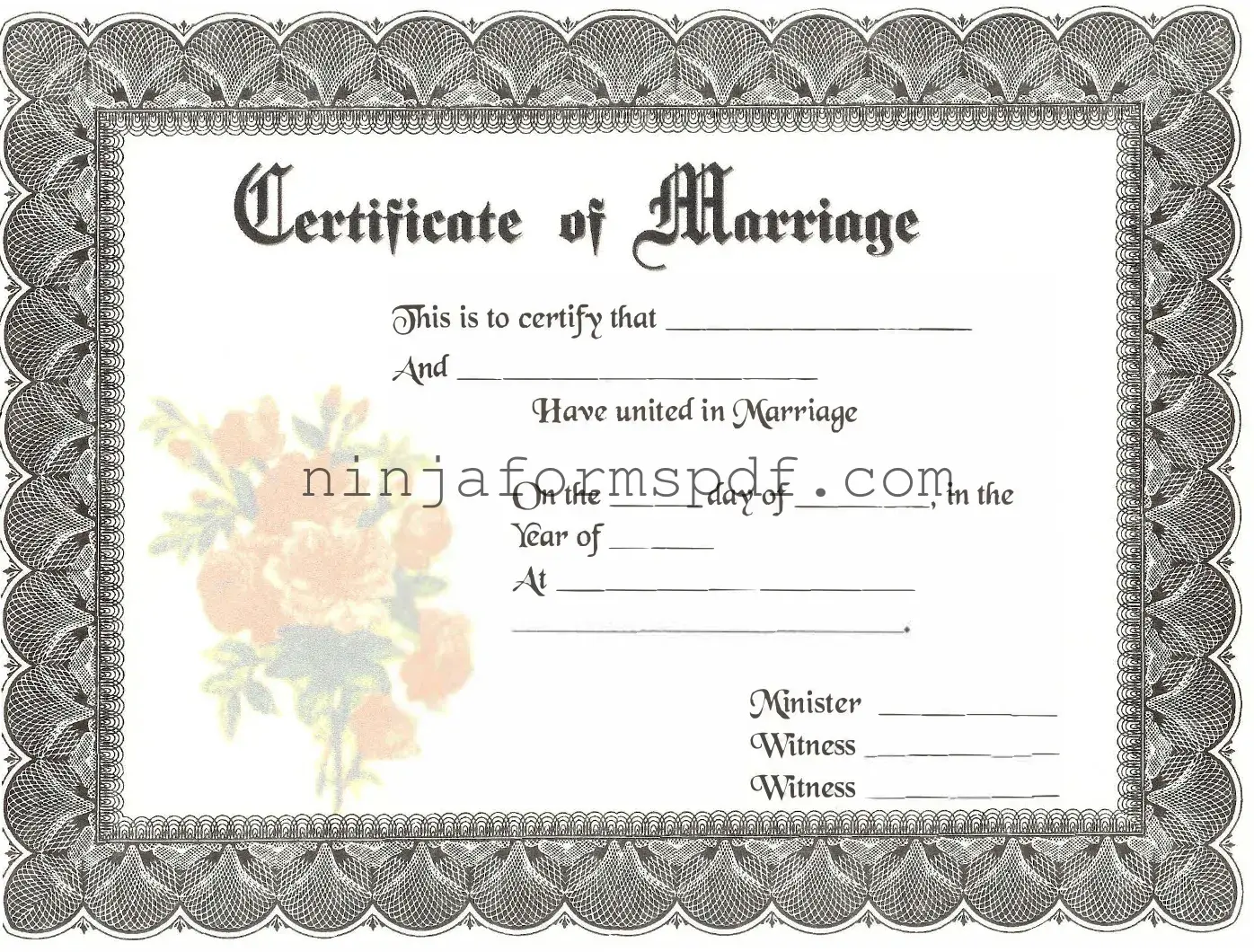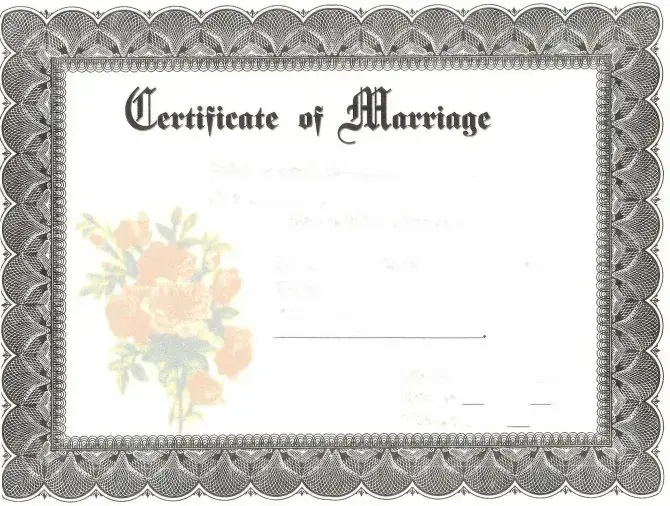The Birth Certificate shares structural and functional similarities with the Marriage Certificate, as both serve as vital records. They are essential for legal identification and verifying personal milestones. While a Marriage Certificate validates the union between two individuals, a Birth Certificate confirms an individual's birth date, place, and parentage. Each document acts as a foundational part of one's personal record, crucial for various life events such as school enrollment, passport application, and claiming inheritance rights.
A Death Certificate is another document that mirrors the Marriage Certificate in its role as a crucial legal record, albeit representing the opposite spectrum of life events. Just as a Marriage Certificate documents the legal union of two people, a Death Certificate officially records an individual's passing, including vital details such as date, location, and cause of death. Both are pivotal for administrative purposes, impacting inheritance, social security benefits, and the execution of wills.
Divorce Decree documents, much like Marriage Certificates, are official records that legalize changes in marital status, but in the direction of dissolving unions rather than forming new ones. While a Marriage Certificate marks the beginning of a legally recognized relationship, a Divorce Decree signifies its legal end, including terms agreed upon or ruled regarding custody, support, and division of property. Both documents have significant legal and personal implications for those involved.
The Adoption Certificate is akin to a Marriage Certificate in that both commemorate the formalizing of familial relationships through legal means. An Adoption Certificate officially records the creation of a parent-child bond without biological ties, similar to how a Marriage Certificate documents the legal union between spouses. Both serve as undeniable proof of these new relationships and are vital for legal, educational, and personal verification purposes.
A Domestic Partnership Certificate also shares similarities with a Marriage Certificate as it legally recognizes a relationship between two individuals. However, it is typically aimed at couples who choose not to marry or same-sex couples in jurisdictions where marriage was not an option. Like a Marriage Certificate, it can be essential for access to benefits, legal rights, and recognition as next-of-kin in medical or emergency situations, reflecting a modern adaptation to diverse familial structures.
Passports and Marriage Certificates both facilitate official recognition beyond domestic boundaries, albeit serving different purposes. A passport verifies an individual's identity and nationality for international travel, while a Marriage Certificate verifies the legal status of a couple's relationship. However, when applying for spousal visas or confirming marital status for immigration purposes, the Marriage Certificate becomes as crucial as a passport in the context of international mobility and residency rights.
Driving Licenses and Marriage Certificates, although seemingly different, play integral roles in certifying personal identification and status. A Driving License confirms an individual’s legal permission to operate vehicles, alongside serving as a widely accepted ID proof, akin to how a Marriage Certificate confirms the legal status of a marriage. Both are indispensable in their respective fields for verifying personal identity and legal permissions.
Social Security Cards, similarly to Marriage Certificates, are essential for accessing a range of benefits and services. While a Social Security Card is critical for employment, taxation, and accessing government services in the United States, a Marriage Certificate is indispensable for legal name changes, tax filing status changes, and spousal benefits under social security and insurance plans. Both documents are foundational to navigating both bureaucratic and life milestone events.
Last but not least, Wills and Marriage Certificates both have significant impacts on legal and financial entitlements. While a Marriage Certificate establishes the legal union between two individuals, a Will dictates the distribution of one's estate upon their death. The existence of a Marriage Certificate can directly influence decisions in a Will, particularly in the absence of one, as it confirms the legal relationship between the deceased and their spouse, affecting inheritance rights and executor duties.

